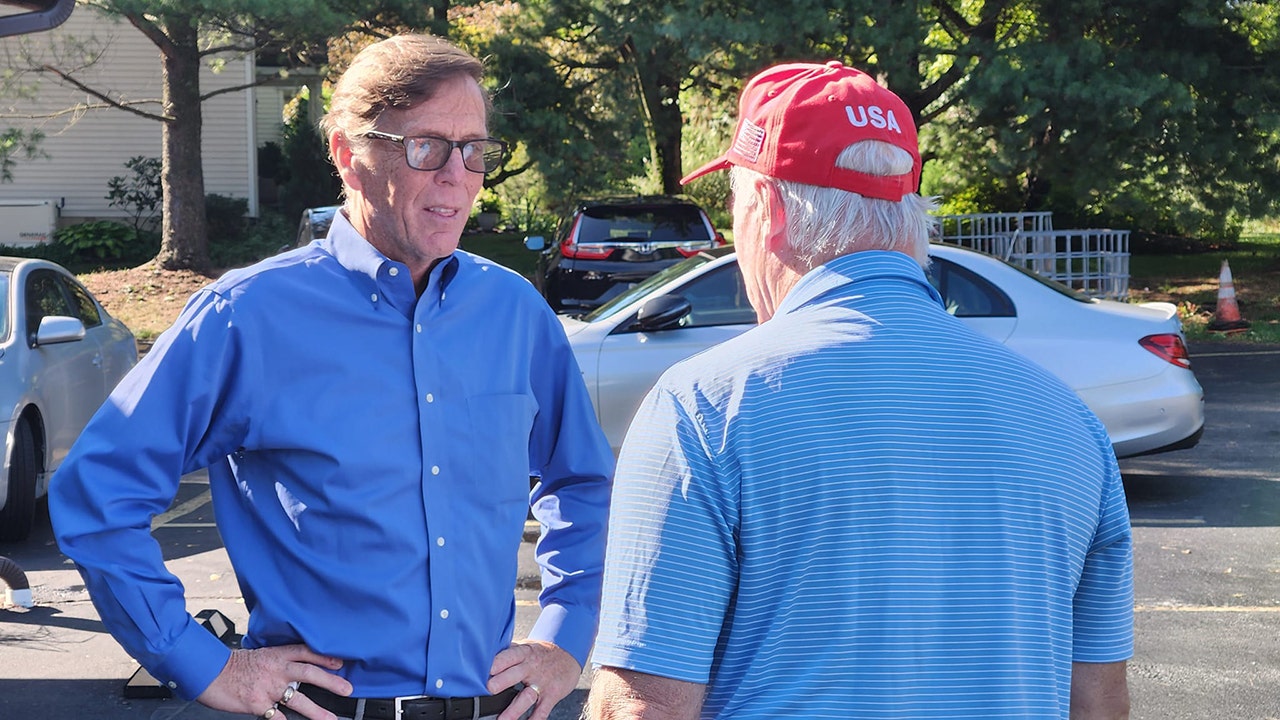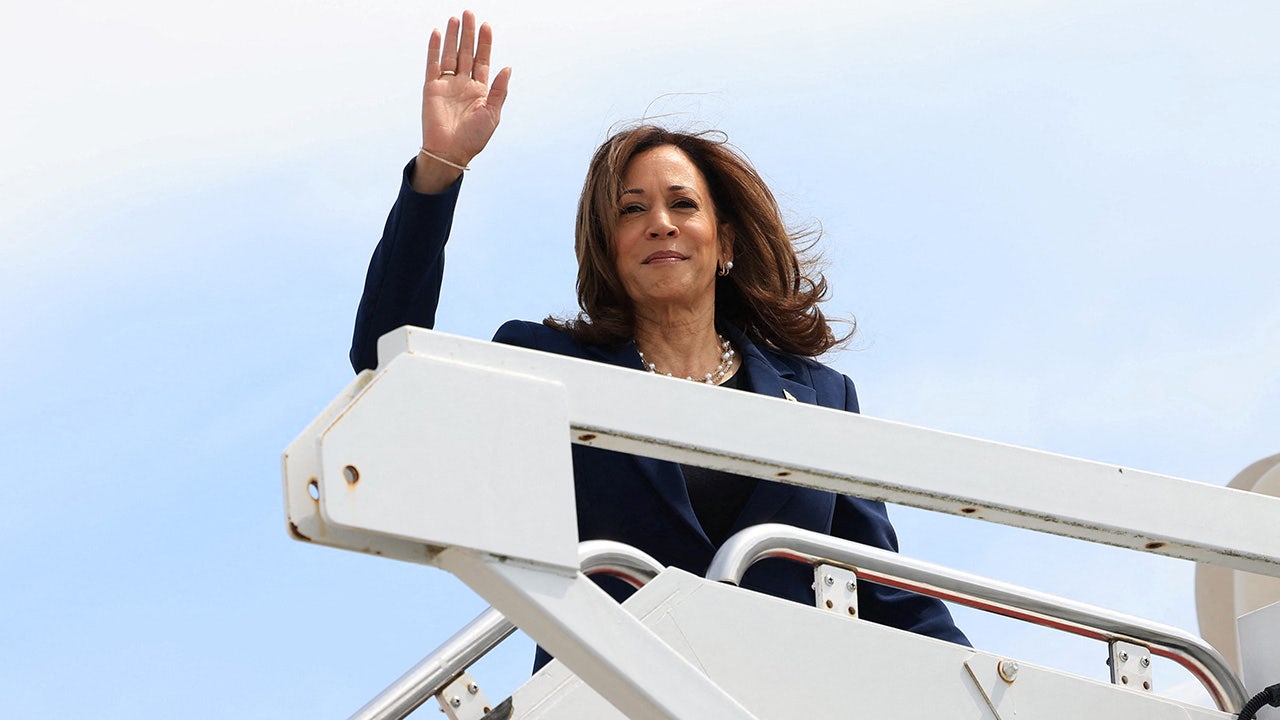Northeast
Trump assassination attempt: Thomas Crooks surveyed grounds, used drone with law enforcement in position
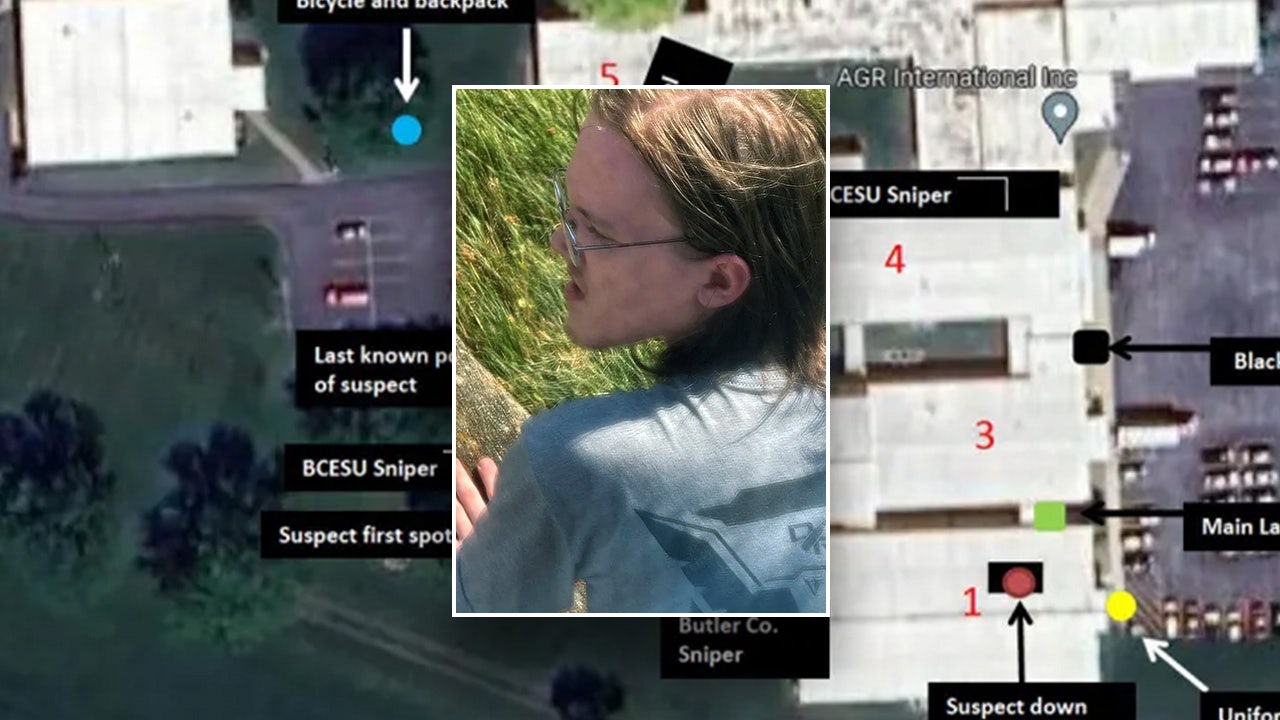
BUTLER, Pa. – The man who attempted to assassinate former President Trump and successfully killed one of his supporters in Butler, Pennsylvania, scoped out the sight of the July 13 rally while local law enforcement officers were in position.
A detailed timeline and accompanying text messages, obtained by Fox News Digital from Sen. Chuck Grassley, R-Iowa, who obtained them from the Beaver County Emergency Services Unit (ESU), provided additional details that led to Thomas Matthew Crooks’ successfully setting up his AR-styled rifle and opening fire.
According to a timeline released by the Beaver County ESU, local law enforcement officers were in their pre-determined places at 10:15 a.m. and local snipers were in place by 10:30 a.m. on Saturday, July 13.
Images of the Beaver County ESU showed the sniper’s positioning among the buildings at the Butler Farm Show grounds.
TRUMP SHOOTING: TIMELINE OF ASSASSINATION ATTEMPT
A photo of Thomas Matthew Crooks that local law enforcement circulated the day of the shooting, July 13, 2024. (Obtained by Fox News Digital)
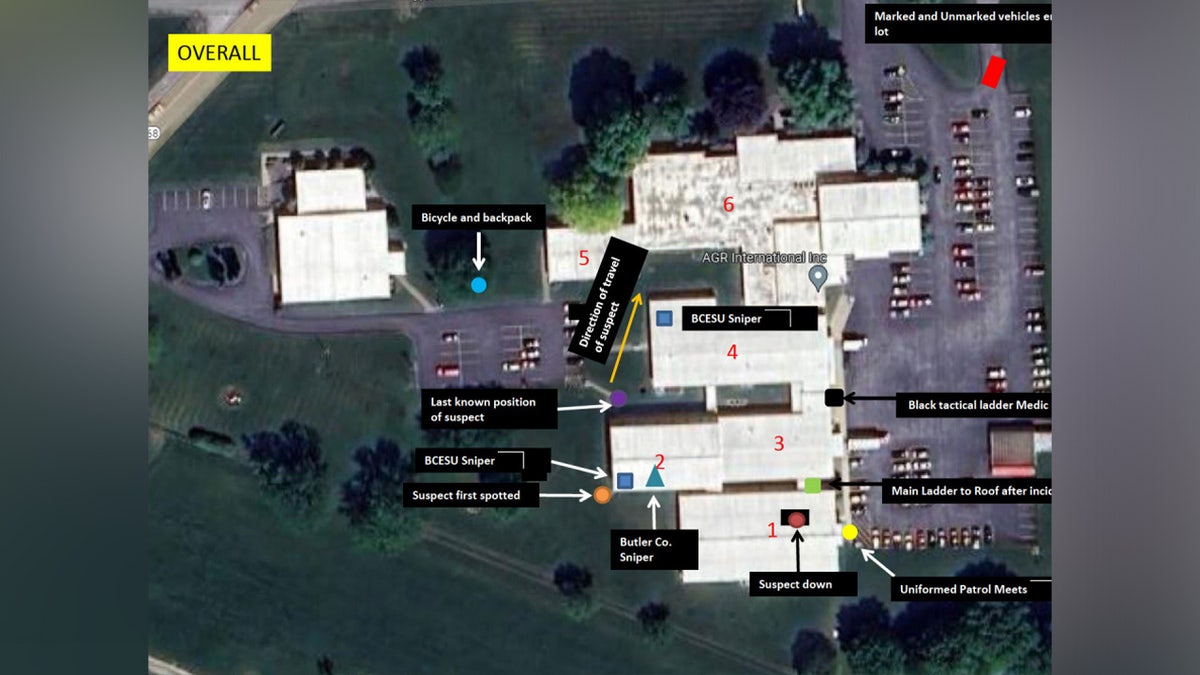
A map detailing the locations of interest pertaining to the investigation of Thomas Crooks’ attempted assassination of former President Donald Trump in Butler, Pennsylvania on Saturday, July 13, 2024. (Provided by Senator Chuck Grassley )
Emerging details of Crooks’ whereabouts prior to the shooting placed the 20-year-old surveying the scene at the same time local law enforcement officers and local snipers were in position.
The FBI previously revealed that Crooks, at 11 a.m. on July 13, had driven to the rally site and spent an hour there before heading home.
TRUMP ASSASSINATION ATTEMPT: FBI SAYS GUNMAN CLIMBED HVAC, TRAVERSED ROOFTOPS TO SHOOTING PERCH
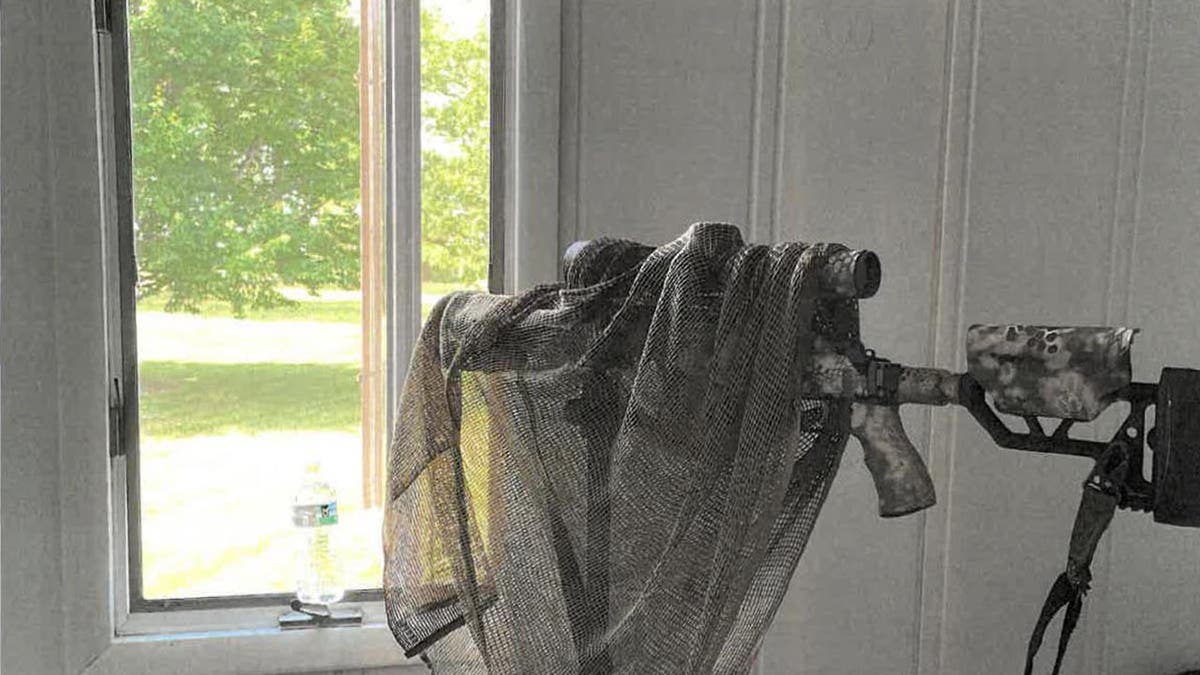
A Beaver or Butler County sniper position is in place at the rally for former President Donald Trump in Butler, Pennsylvania on July 13, 2024. The former president was shot in an assassination attempt at the rally. (Provided by Senator Chuck Grassley )
Crooks did not return to the scene until 3:50 p.m. Local law enforcement officers, in their designated positions, spotted him for the first time around 5:10 p.m. — approximately 50 minutes before Trump took the stage, according to documents provided by Grassley’s office.
On his return to the rally site, Crooks flew a drone about 200 yards away from where Trump was going to be speaking, according to the FBI.
The FBI later said that no photos or videos were taken from the drone and that the agency found no memory card in the drone.
TRUMP ASSASSINATION ATTEMPT: NEW TEXTS SHOW LOCAL POLICE SCRAMBLE TO ASSIST WITH COVERING RALLY
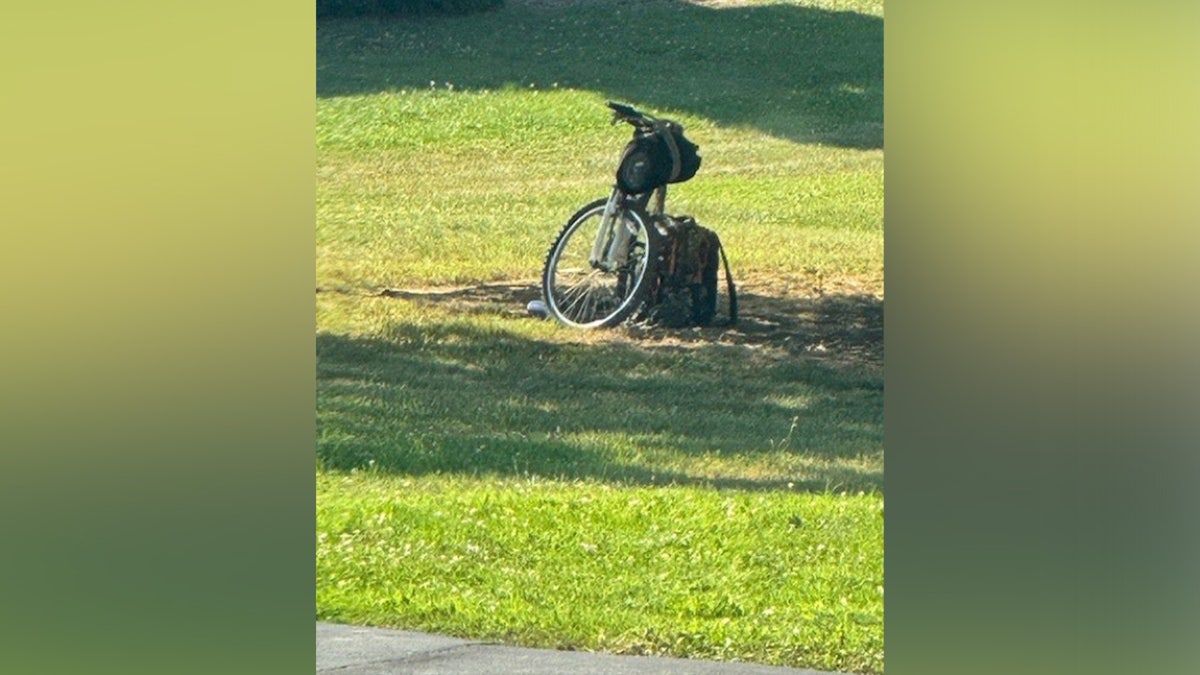
An evidence photo shows the bicycle and backpack left by Thomas Crooks before his attempted assassination of former President Donald Trump in Butler, Pennsylvania on Saturday, July 13, 2024. (Provided by Senator Chuck Grassley )
At 5:30 p.m., local law enforcement snapped a picture of Crooks and escalated it to command.
“Kid learning around building we are in,” an officer wrote in a text message, along with an image of Crooks. “AGR I believe it is. I did see him with a range finder looking towards stage. FYI. If you wanna notify SS snipers to look out.”
TRUMP ASSASSINATION ATTEMPT: TEXTS REVEAL OFFICERS WERE AWARE OF THOMAS CROOKS 90 MINUTES BEFORE SHOOTING
“I lost sight of him,” the officer added.
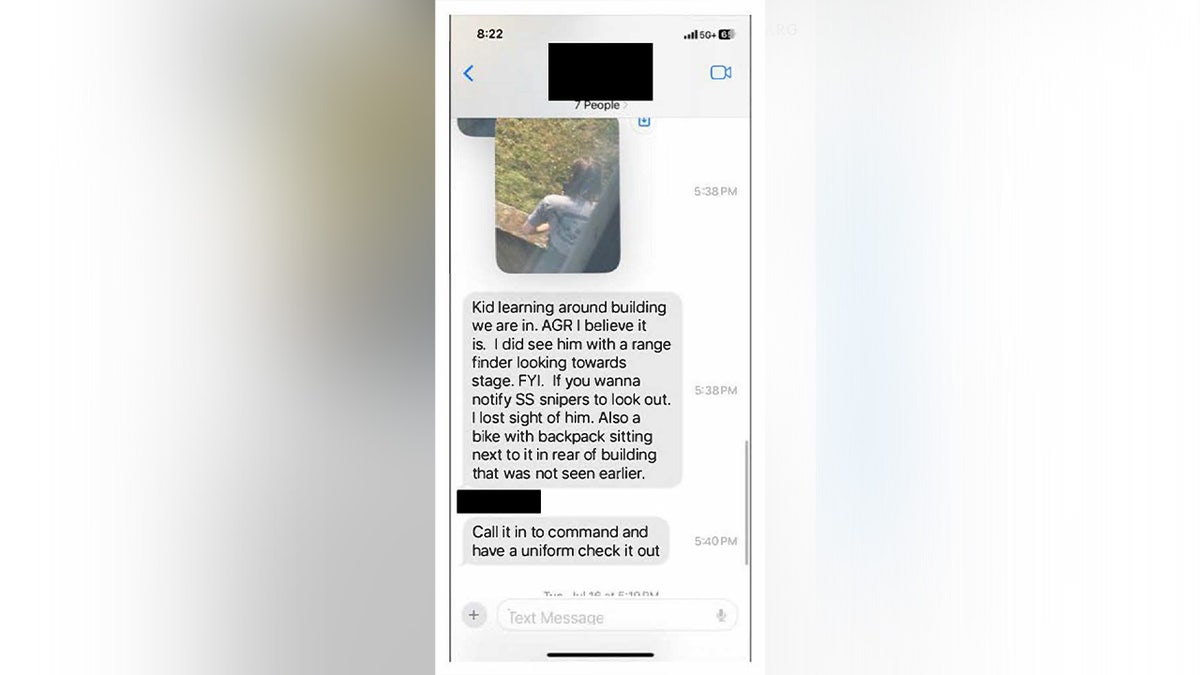
Law enforcement circulated a picture of Thomas Matthew Crooks, the texts showed. (Fox News)
A follow-up message said: “Call it in to command and have a uniform check it out.”
By 6:12 p.m., the “kid” would be killed by a counter-sniper after he opened fired on the rallygoers.
Trump was grazed by a bullet on his ear, while three rallygoers were also shot, including Corey Comperatore, 50, who was killed protecting his family from danger.

James Copenhaver and David Dutch were shot and injured at the rally by Thomas Matthew Crooks on July 13. (Allegheny Health Network)
David Dutch and James Copenhaver were injured after being shot at the rally. They have both since returned home.
Read the full article from Here

Massachusetts
As legislative session winds to a close, Mass. lawmakers still have big policymaking to do. Here’s what they have left. – The Boston Globe

The Senate approved six new significant bills Monday — covering issues as diverse as domestic violence and sexual assault awareness, liquor licenses in Boston, and legal parentage for families that have children through means such as in-vitro fertilization or surrogacy — voted on three others Tuesday. Representatives also pursued their own batch of late-session legislation. On Thursday, the House teed up and approved nine bills, including a string of proposals related to the welfare of animals.
Here are some of the larger bills left to be hammered out between the chambers if a compromise is to land on Governor Maura Healey’s desk before the formal session comes to an end.
Housing policy
Healey’s first big swing on housing policy, a multibillion dollar bond bill, is coming down to the wire as well. Bond bills for housing come up every five years, typically for the Legislature to reauthorize bond spending for housing programs and development. Healey however, has turned this bill into a vehicle for wide-ranging housing policy legislation, which has complicated its path and drawn intense lobbying from real estate interests and housing advocates.
While the House and Senate are in agreement on most of the major policies and spending commitments — such as legalizing Accessory Dwelling Units and rejecting the prospect of a new fee on high-dollar real estate transactions — there are a few major sticking points.
The House, for example, proposed spending $6.2 billion on housing programs, while the Senate only proposed $5.2 billion. The $1 billion difference between the two versions is a proposal in the House that is a priority of Speaker Ron Mariano to help expand the Massachusetts Water Resources Authority’s water service area, making housing production easier in some municipalities.
The Senate version of the bill proposes to reduce a fund to jumpstart paused mixed-income developments from the House’s proposed $250 million to $50 million, and removes a clause from the House version that would give renters the opportunity to buy their unit if their landlord wants to sell.
The Senate bill favors a provision from Healey’s initial proposal that would allow for the sealing of renters’ past eviction records in some cases. The House did not include that policy.
The two chambers also differ over a policy that would allow cities and towns to pass rules that mandate certain ratios of affordable housing in new market rate developments by simple majority instead of a two-thirds vote.
Liquor licenses
The Legislature is weighing plans to add more than 200 liquor licenses to Boston, where permits to serve alcohol are expensive, in short supply, and especially rare in communities of color.
In May, the House recommended creating 205 permits in total. That would include 180 restricted liquor licenses for 12 ZIP codes (Roxbury, Roslindale, Mattapan, Hyde Park, West Roxbury, East Boston, Dorchester, Jamaica Plain, Charlestown). Those permits cannot be bought and sold to other businesses, as Boston licenses typically are, and they must be returned to the city after a business closes. In the House plan, six licenses would be distributed annually to each neighborhood for three years. The House version also created 15 restricted licenses for nonprofit agencies, such as zoos and small theaters; three restricted license for Oak Square in Brighton; and seven unrestricted licenses to be used anywhere in the city.
The Senate came back with an expanded plan on Monday, looking to add more licenses to Boston than the City Council asked for in its original home-rule petition.
In that version, lawmakers created 264 restricted permits for the same areas the House identified, plus parts of the South End, with the same rollout schedule. The additional 15 licenses for nonprofits would also be made available to quasi-government and government agencies. The Senate also chose to create 12, rather than seven, unrestricted permits citywide. Another three restricted licenses would remain for Oak Square.
Both versions would mark the largest effort to expand licenses in Boston since Prohibition. Advocates hope that introducing more permits will aid disadvantaged restauranteurs, enliven quiet neighborhoods, and help narrow the racial wealth gap.
Economic development
Both chambers have also passed sweeping economic development bills that tuck in hundreds of millions for the life sciences industry, though they vary drastically in funding levels.
The Senate’s $2.8 billion economic development package dramatically scaled back what Healey and the House sought for life sciences. Senate lawmakers propose to borrow $225 million over five years for the sector — less than half of the $500 million over a decade that Healey and House lawmakers sought.
In its version of the economic development bill, the House also sought to increase tax incentives for life sciences companies by $200 million.
Senate leaders skipped that measure in their proposal, instead proposing to keep the tax incentives at their current level.
The Senate also includes language that would allow the Kraft Group to build a new soccer stadium for the New England Revolution near the Encore Boston Harbor casino in Everett — a key provision left out of the House’s version.
The House, on the other hand, included a proposal to rename the Seaport convention center after late Boston mayor Thomas M. Menino while the Senate did not.
Climate bill
Negotiators from the House and Senate are still at work on a climate bill. The main thrust of bills passed in both houses would reform the process for approving new energy infrastructure in the state — cutting the time to less than half of the current rate, while adding in assurances to consider the needs of environmental justice communities and the environment.
But the rest of the bill has proven harder to nail down. The Senate is seeking a broader bill that would rein in natural gas infrastructure, ban the ability of third party competitive electric suppliers to sell directly to residents, update the state’s bottle bill, and more.
The House, meanwhile, has pushed for a bill that would call for the procurement of additional clean energy, including long-duration battery storage, and introduce measures to boost the availability of electric vehicle chargers in the state.
At stake is the state’s ability to pass its third successive major climate bill, and continue its momentum on slashing emissions and greening the electricity supply.
Opioid bill
Massachusetts senators approved a bill that would allow cities or towns to approve sites that could offer supervised consumption of drugs, marking an 11th-hour push for a provision that surprised House leaders who passed their own opioid-related bill earlier this summer.
The provision allowing for so-called overdose prevention centers, more commonly known as safe consumption sites, is part of a larger package released by the Senate on Monday aimed at treating substance abuse. Senate leaders had supported a measure six years ago to create a supervised consumption site pilot program before they stripped it from a bill amid opposition from then-governor Charlie Baker, a Republican, and the Massachusetts US attorney’s office.
Members of the House did not make a push for the idea this session. Neither did Healey, though late last year her administration signaled its support for the concept.
Samantha J. Gross can be reached at samantha.gross@globe.com. Follow her @samanthajgross. Diti Kohli can be reached at diti.kohli@globe.com. Follow her @ditikohli_. Andrew Brinker can be reached at andrew.brinker@globe.com. Follow him @andrewnbrinker. Sabrina Shankman can be reached at sabrina.shankman@globe.com. Follow her @shankman.
New Hampshire
After bear charges hikers, N.H. expert has advice on how to share the outdoors

Several hiking parties reported encounters with a bear in the Lincoln Woods area this week, including a group that was charged at by the bear.
Andrew Timmins, Games Programs Supervisor at New Hampshire Fish and Game, said the group that witnessed the bear charging had a dog with them.
“I give them a lot of credit for having the dog leashed and under control. That’s what responsible hikers do,” Timmins said. “But the bluff charge was clearly due to the dog barking, and kind of intensifying the situation.”
Bears aren’t usually interested in interacting with humans, said Timmins. But hikers may encounter them along the edges of the forest canopy, where there may be more food for bears.
“Not a lot of sunlight comes through the forest canopy. As a result, on the understory of the forest there usually is not a lot of vegetation growing, so not a lot to eat,” said Timmins. “But when you get these breaks in the canopy like a hiking trail, those edges are getting increased sunlight, which creates more diversity in plant species.”
If hikers encounter a bear in the wild a safe distance away, the best thing to do is to wait for it to clear the area, said Timmins.
“You can just stand there kind of quietly and let the bear just move off in time, or you can make it aware of your presence with some normal noise,” said Timmins. “You know, it might be a ‘hey bear’ in a kind of low or moderate voice, or it might just be clanking hiking sticks together — just something to make it aware.”
In most cases, bears will run off on their own, Timmins said. But if a bear does approach a hiker on the trail, the key is to remain dominant but not aggressive. To do this, hikers should make eye contact with the bear, speak at a regular volume, and back away slowly.
“If a bear comes up close to you, or exhibits any bluff charges, not a lot changes,” said Timmins. “You still want to be putting distance between you and the animal. But at that point, you might raise your voice a little bit to try to scare the bear off.”
Timmins said carrying an air horn can be helpful for such occasions. He also recommended clanging hiking sticks, as bears tend not to like the sound of metal on metal.
Timmins also advises against throwing food at bears, as this teaches them to approach humans more often.
“What that does is it just teaches the bear that ‘Hey, there’s something to this, you know, when I make my presence known, a percentage of hikers toss granola bars off in the bushes for me,’” Timmins said. “That can start to build that behavior. It’s really kind of begging or panhandling behavior.”
Officials are taking steps to reach the bear in question to prevent further encounters with humans.
Timmins emphasized that bears are generally peaceful.
“There are bears and people sharing space on a daily basis . . . and the number of conflicts that come out of that are very low.” Timmins said. “The bears aren’t terrible animals. They belong in our forest, and we have just got to learn how to share the same areas for different purposes and coexist.”
This story is a production of the New England News Collaborative. It was originally published by New Hampshire Public Radio.
New Jersey
N.J. rattled by 2.2 magnitude earthquake. Did you feel it?

A 2.2 magnitude earthquake rattled part of New Jersey early Wednesday, the strongest tremor to hit this state this month.
The earthquake was centered about 3.1 miles east of Califon, Hunterdon County at about 1:44 a.m., according to the U.S. Geological Survey.
The earthquake is the sixth of the month in New Jersey. Five of the six have been near Califon, while a 2.0 magnitude tremor was recorded near New Egypt in Ocean County on July 6.
There have been well over 100 small aftershocks felt in the state since a 4.8 magintude earthquake centered in Tewksbury, Hunterdon County on April 5 was felt by more than 42 million people along the East Coast.
The USGS has said aftershocks typically become less frequent with time, “although they can continue for days, weeks, months, or even years for a very large mainshock.”
There were dozens of aftershocks in the days following the April 5 earthquake.
Our journalism needs your support. Please subscribe today to NJ.com.
Jeff Goldman may be reached at jeff_goldman@njadvancemedia.com.
-

 Politics1 week ago
Politics1 week agoManchin considers re-registering as Democrat to run for president
-

 News1 week ago
News1 week agoHow the Trump Rally Gunman Had an Edge Over the Countersnipers
-

 Politics1 week ago
Politics1 week agoTop five moments from Secret Service director's hours-long grilling after Trump assassination attempt
-

 Politics1 week ago
Politics1 week agoDem strategists say Harris 'only practical choice' as party leaders begin endorsing her
-

 News1 week ago
News1 week agoMayorkas names panel to conduct review of Trump assassination attempt
-

 Politics1 week ago
Politics1 week agoTrump blows past Biden in June fundraising race, with July numbers expected to be worse for Democrats
-

 News1 week ago
News1 week agoGeorge Clooney Endorses Kamala Harris, Says Biden Is ‘Saving Democracy’
-

 World1 week ago
World1 week agoThousands in Mallorca demand 'less tourism, more life'









